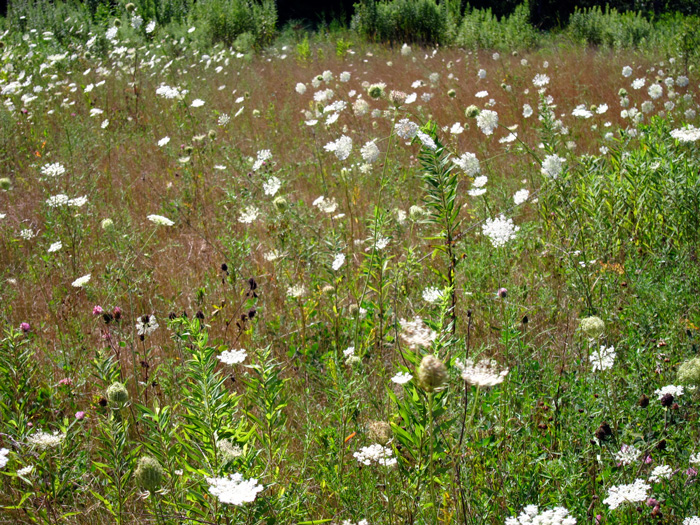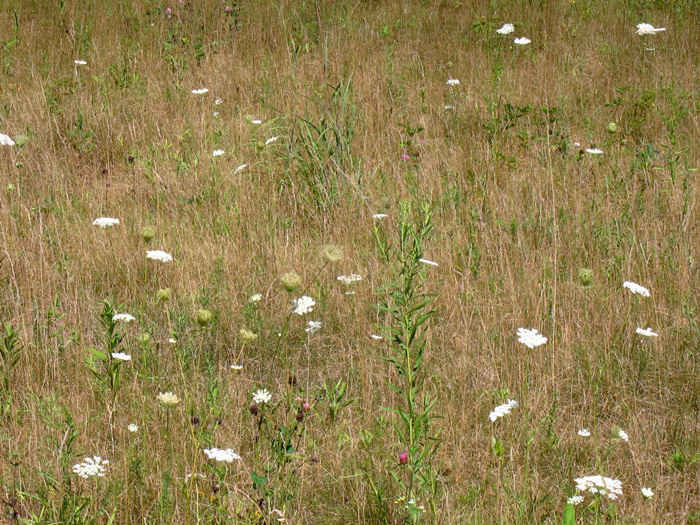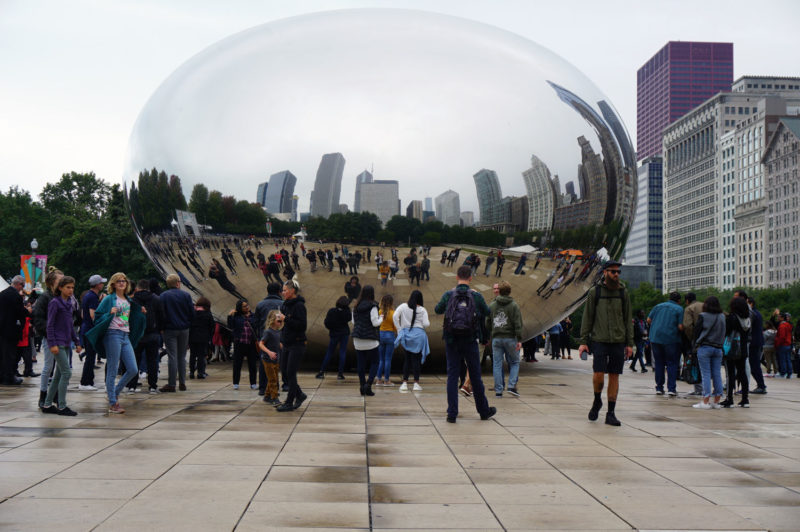Queen Anne’s Lace was one of the first flowers I noticed as a child. In a spare lot near our house in Peoria, it grew profusely. To see a picture of this flower automatically conjures up associations of fierce Midwestern summer heat, tall plants growing happily in neglected yards, a relentless sun.
Then the close-up: the intricacy of a single bloom, looked at head-on. The pearly shape of the petals, the fluffiness; the single spot at the center that was always blood-red. The high-faluting name, when I learned it, was so evocative that the romantic girl that I was grew almost dizzy. Was it really like lace that had been made for a queen?
As an adult, I forgot all about Queen Anne’s lace, and, when I happened upon it, it was far from my favorite. It ceased to interest me. Too familiar. Then I went walking on a prairie one day and saw masses of Queen Anne’s lace growing and blooming in a drying field. As an abstraction, the flower re-enchanted me.
The flat white heads and furled umbrels made amazing patterns as they danced in the breeze. Their shape and pure whiteness, liveliness and number—their very commonness—rekindled my appreciation, commanded it in a whole new way. I gazed, I took pictures, I wished I could paint.
This European garden flower escaped its confines long ago. In our free world, it became a weed, a weed among weeds, full of grace and beauty. If Van Gogh were here now, would he have painted these?


